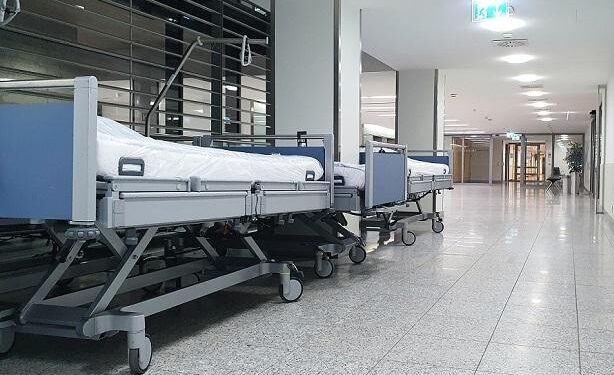In a developing story that underscores the ongoing crisis in Maryland’s healthcare system, a Circuit Court judge has intensified scrutiny on the state’s health department regarding critical hospital bed shortages. As the region grapples with mounting patient demands amid a struggling healthcare infrastructure, the judge’s recent orders highlight the urgent need for actionable solutions. The pressure from the judiciary comes at a time when hospitals are facing unprecedented challenges, exacerbated by factors such as staffing shortages and increased patient flow due to both seasonal illnesses and lingering effects of the pandemic. This article delves into the judge’s compelling directives, the implications for Maryland’s healthcare policies, and the broader context of the state’s efforts to address this pressing issue.
Judge Demands Immediate Action from Maryland Health Department to Address Hospital Bed Crisis
The ongoing hospital bed crisis in Maryland has reached a critical tipping point, prompting a judge to demand swift action from the Maryland Health Department. In recent hearings, the judge highlighted the alarming shortfall of available hospital beds, emphasizing the urgent need for strategic interventions to ensure patient care standards are met. The judge outlined key measures that must be prioritized, including:
- Increasing hospital capacity: Encouraging facilities to expand available beds through temporary measures.
- Streamlining patient flow: Developing partnerships with long-term care facilities to reduce hospital stays.
- Enhancing staffing levels: Encouraging the recruitment of additional healthcare personnel to support overwhelmed hospitals.
Healthcare leaders in the state are now under pressure to collaborate with regulators to formulate a comprehensive plan to alleviate the situation. The Maryland Health Department has been tasked with providing a detailed report on the actions taken to address these shortages. Failure to respond adequately could lead to further judicial intervention, impacting not just the current healthcare crisis but also the long-term viability of the state’s health infrastructure. As the situation evolves, stakeholders are anxiously awaiting specific commitments from the department to tackle the escalating demands for their services, underscoring the delicate balance between healthcare capacity and patient safety.
| Current Capacity | Needed Capacity |
|---|---|
| 80% | 95% |
Impact of Bed Shortages on Patient Care and Community Health in Maryland
The ongoing shortage of hospital beds in Maryland is creating significant challenges for healthcare providers and adversely impacting patient care. As emergency room wait times escalate due to a lack of available facilities, patients face delays in critical treatments and services. Those requiring urgent attention, including trauma cases and individuals experiencing severe health crises, are particularly vulnerable. Statistics reveal that hospitals are often operating at or near full capacity, leading to difficult decisions about patient admissions and resource allocations.
Moreover, the ramifications extend beyond immediate patient care, touching on broader community health outcomes. Inadequate bed availability can strain healthcare systems and lead to overcrowding, which further complicates efforts to manage public health issues such as infectious disease outbreaks. As a result, local health departments are grappling with the following challenges:
- Increased wait times for beds, extending beyond emergency settings to scheduled procedures.
- Potential deterioration of health for individuals waiting for admission.
- Reduced community trust in healthcare systems due to perceived inadequacies.
| Issue | Impact |
|---|---|
| Bed Availability | Delays in treatment |
| Emergency Room Overcrowding | Increased patient risk |
| Resource Allocation | Potential triage challenges |
Proposed Solutions for Enhancing Hospital Capacity and Accessibility in the State
The mounting pressure from judicial oversight has underscored the urgent need for innovative strategies aimed at augmenting hospital capacity and accessibility in the state. Policymakers are being urged to consider a multi-faceted approach that addresses both immediate and long-term challenges. Among the proposed solutions are:
- Expansion of Telehealth Services: Enhancing telehealth capabilities could streamline patient care and reduce the strain on physical facilities, allowing healthcare providers to cater to more individuals remotely.
- Increased Funding for Hospital Infrastructure: Allocating additional funds specifically for the renovation and expansion of existing facilities can provide much-needed support to meet demand.
- Collaboration with Private Sector: Partnering with private hospitals and outpatient facilities to share capacities can alleviate bed shortages during peak periods.
Furthermore, a focus on workforce development is essential for sustaining any enhancements made. Strategies should include:
- Incentives for Healthcare Professionals: Offering student loan forgiveness and housing stipends can attract qualified professionals to underserved areas.
- Training Programs for Medical Staff: Expanding training programs focused on emergency management can prepare the workforce for sudden influxes of patients.
- Public Health Campaigns: Increasing awareness regarding preventive care can help reduce hospital admissions, thereby optimizing available resources.
Final Thoughts
the ongoing scrutiny from the judiciary highlights the urgent need for the Maryland Health Department to address the critical shortage of hospital beds within the state. As Judge [Name] reiterated in recent hearings, the implications of inadequate capacity extend beyond mere statistics; they affect the quality of care available to vulnerable populations in times of crisis. The pressure exerted by the court serves not only as a call to action but also as a reminder of the responsibilities that health authorities bear in ensuring patient safety and access to essential medical services. As Maryland grapples with these challenges, the need for collaborative efforts between government bodies, healthcare providers, and the judicial system will be crucial in crafting sustainable solutions for the future. Stakeholders and citizens alike will be watching closely as developments unfold, hopeful for meaningful reforms that can alleviate the burdens faced by healthcare facilities across the state.































